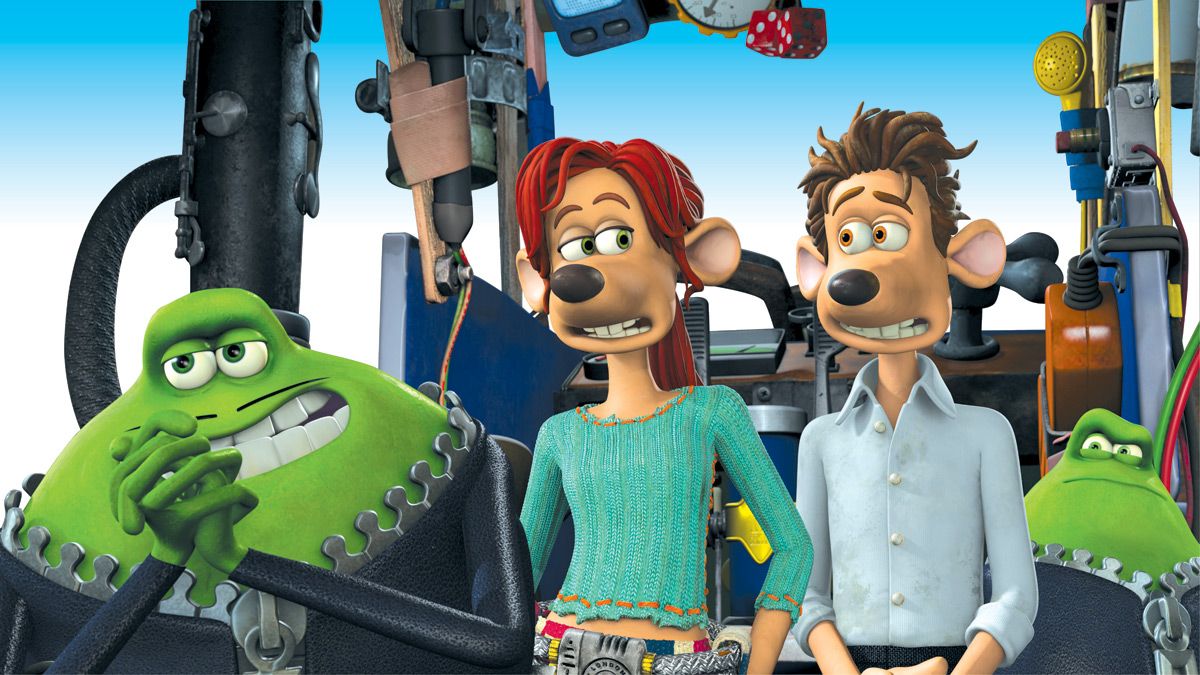

The only distinguishing factor is that Roddy's weapon is an umbrella that also allows him to float across short distances, whereas Rita's preferred implement is a bungee hook that can also be used to latch onto faraway grapple spots. They can both run at varying speeds, jump, double jump, and grab onto things, as well as smack enemies with their weapon of choice. Despite their looks, Roddy and Rita are functionally identical.

Missions are split up so that you control Roddy during some missions, Rita in others, and Rita's boat, the Jammy Dodger, in the rest. For the most part, Flushed Away follows the blueprint that every generic 3D adventure game follows. Gameplay also doesn't draw much inspiration from the movie. The characters have a lot to say, their dialogue feels natural, and the overall visual quality is 10 times better than what's churned out by the in-game graphics engine. As noninteractive clips go, these scenes are generally enjoyable. Instead, they're computer-generated look-alikes that employ slapstick situations and spoken dialogue that's similar in tone to what Aardman and Dreamworks produced for the movie.
#Rita flushed away movie#
These scenes weren't put together using actual movie footage.

The closest the game comes to resembling the movie is during the many prerecorded cinematic scenes that play after each level. With regard to the audio, the various jump and punch sound effects are appropriate, and the rock- and swing-style music is fitting, but there's nothing overtly identifiable from the movie aside from a few brief voice comments. The polygon count is low, the textures are blurry, and it's often hard to see what's in front of you because everything is so dark and murky. As it is, the overall quality of the graphics is on the weaker end of the spectrum. By and large, the game recycles the same plain floors, boxes, pipes, and platforms over and over again. Key environments, such as the underworld metropolis and Toad's mansion, look vaguely like the ones in the movie, but the rest are nondescript sewers and rooms. Furthermore, they lack detail, and their animations are stiff and boring. The characters have a rounded, clay-formed appearance that's only mildly reminiscent of the character designs produced by Aardman for the movie. Unlike the majority of other movie-based games, however, Flushed Away doesn't try very hard to copy the atmosphere of the movie it's based on. Like many movie-based games, Flushed Away shoehorns the main characters and the underpinnings of the story into a sequence of generic run-and-jump levels and then tacks on a bunch of additional levels that concern characters and story tangents that aren't in the movie. You spend most of the game jumping from one platform to the next in nondescript sewer environments. On top of all that, the game is hampered by technical problems that make it impossible to get through any level without "dying" and respawning multiple times. The design is derivative of countless other games, while the lukewarm presentation relies primarily on recorded video scenes to convey an association with the movie. If it sounds like the developers put together a generic run-and-jump game and stuck the movie's characters into it, that's because that's exactly what they did. To help Roddy find his way home, you have to guide Roddy and his newfound friend, Rita, through roughly a dozen multilevel missions that involve platform jumping, sneaking, and a few skirmishes with angry insects, rodents, and amphibians. James as he makes his way through the sewers and back to his cushy life in someone's condo. Loosely based on the animated movie of the same name, Flushed Away is a 3D adventure that follows a mouse named Roddy St.


 0 kommentar(er)
0 kommentar(er)
